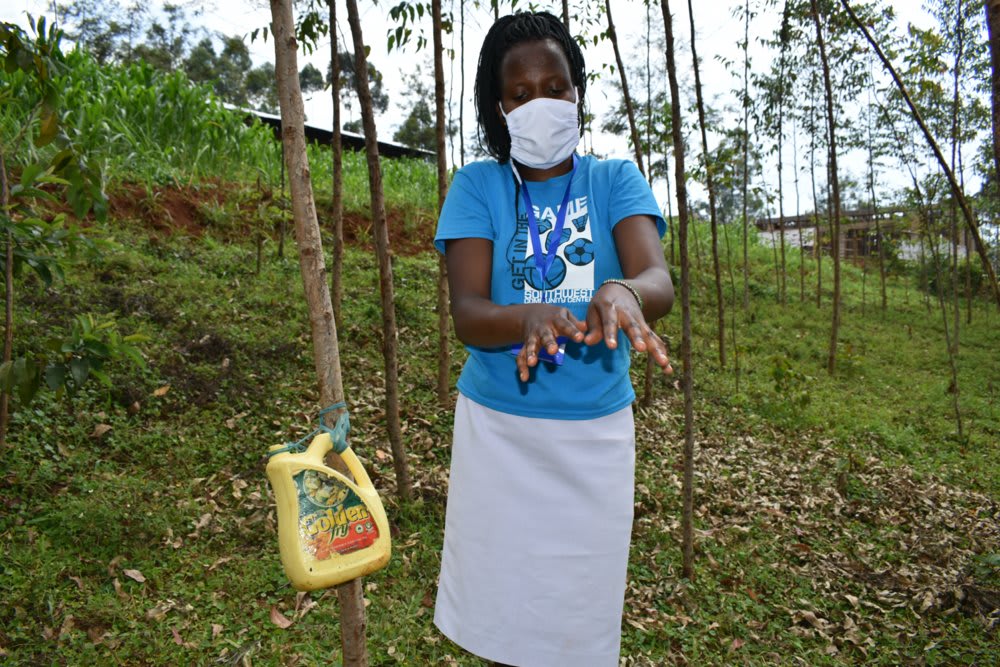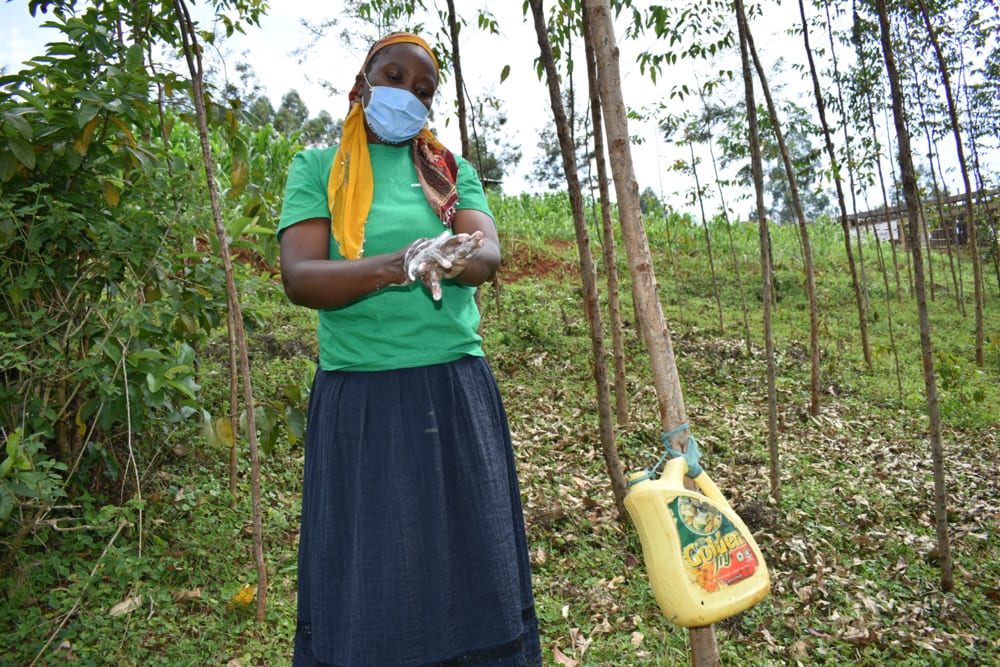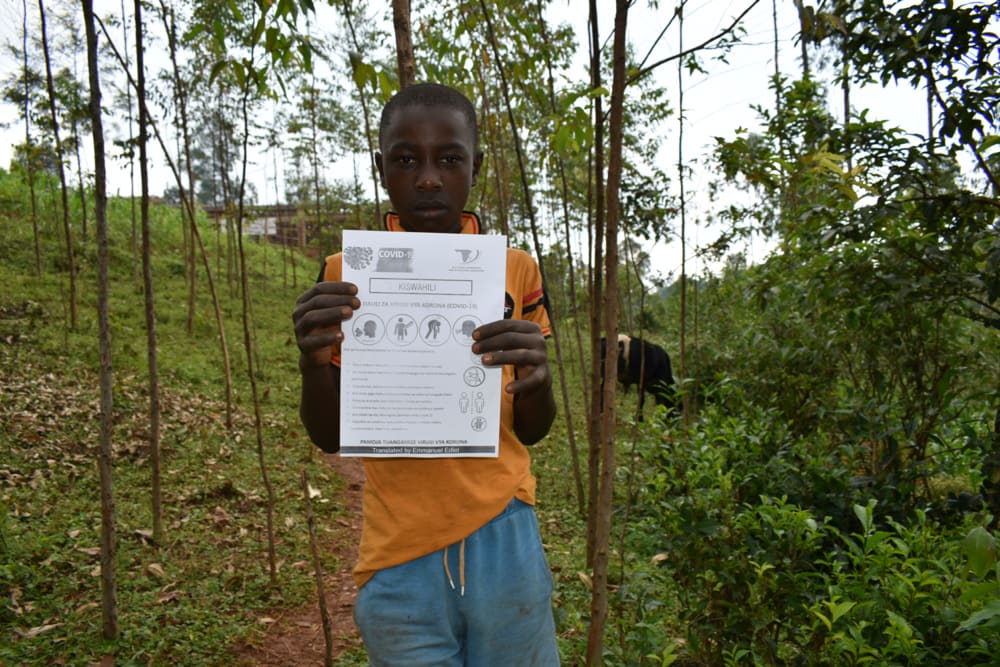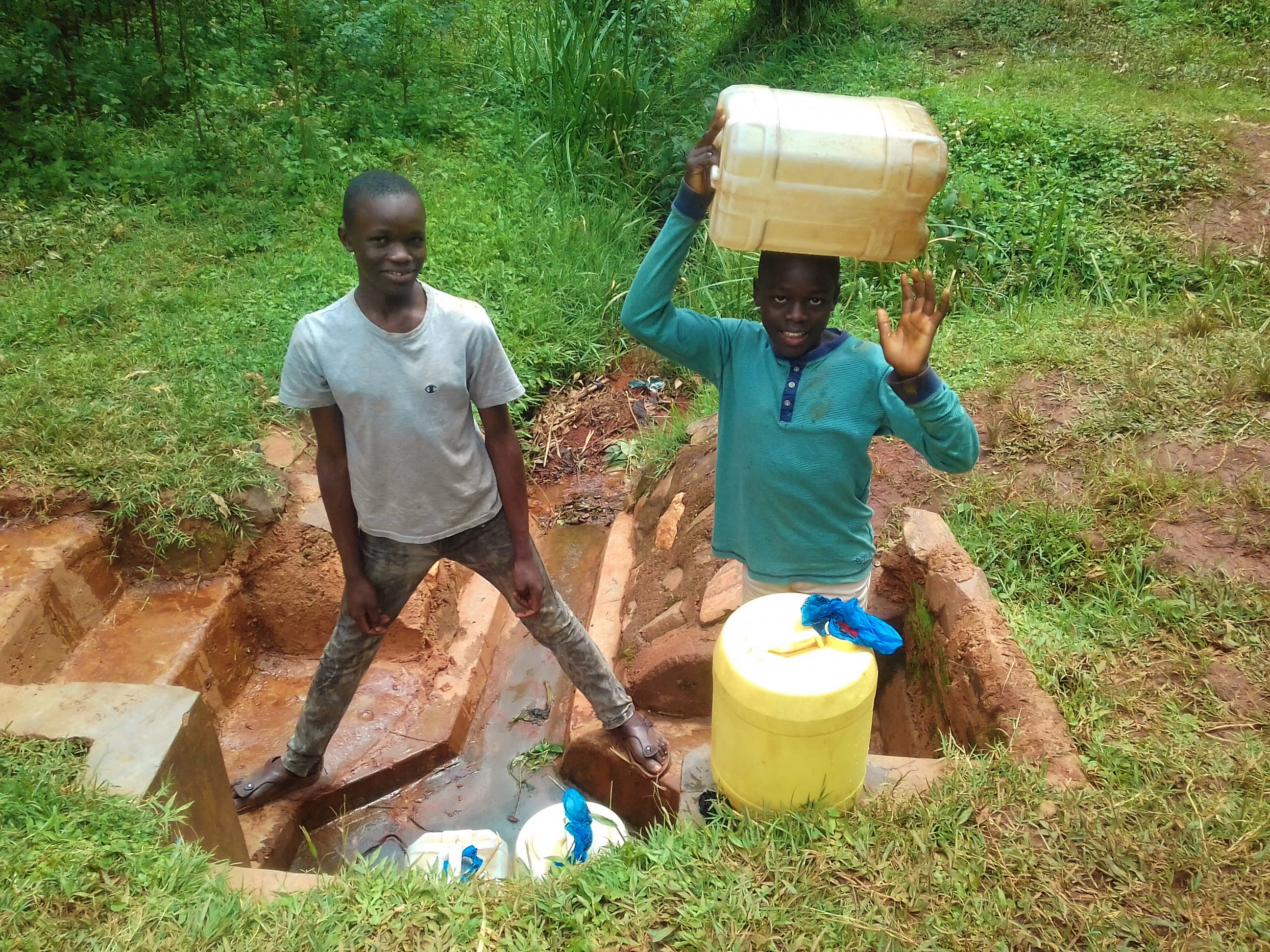This project is a part of our shared program with Western Water And Sanitation Forum (WEWASAFO). Our team is pleased to directly share the below report (edited for clarity, as needed).
Background Information
Wakidima Spring is found in Hedwe Village, Chambiti sub-location, Wamaluma location, Vihiga sub-county of Vihiga County. The spring serves a population of 200 people from 30 different households: 130 female and 70 male. During the dry seasons, Wakidima Spring also draws residents of the Mbale police line and employees that work at nearby car wash agencies.
The Current Source
The spring area is not fenced and is therefore open to contamination by both people and animals. It was also observed that the spring is prone to surface runoff and storm water. The ground surrounding the spring is filthy and slippery, causing women and children to slide and fall when they fetch water. "We have had it rough to draw water from here more so during the rainy season. Women and children do slide but we have to keep coming for water," says a mother waiting at the spring. The area around the spring is not only slippery, but is overgrown with grasses and brush. "We battle with the challenge of trying to keep away snakes coming from the nearby bushy to drink this same water," said a father whose son was a snakebite victim. "The nearest alternative spring is about three kilometers away, which makes us to make long lines to get water," commented another woman found drawing water from the spring. Protecting Wakidima Spring will save the local people's time and health.
Sanitation Situation
Less than 50% of households have even the simplest of latrines. Some of the floors are old and cause children and elderly to fear using the latrine. Open defecation seems to be an issue for this area, so contamination routes will be highlighted during training. There will also be a session that proves it is cheaper to build a sanitation facility than to treat the repercussions of open defecation!
A majority of the spring's users live in overgrown, bushy homesteads full of litter. Many people also ignore the proper use of insecticide-treated nets to prevent malaria, and instead use them to fence in gardens. When asked to comment on personal hygiene practices, one of the respondents said, "I don’t mind taking untreated water. In most instances I have eaten with dirty hands, used the bush to defecate and gone many days without taking a bath." This was a clear indication that some of the people in this community have lost all hope for quality water, health and hygiene.
Some of the common complications listed include cases of waterborne diseases like bilharzia, malaria, typhoid, diarrhea and jiggers infection. The community members agree to partner with WEWASAFO to protect this spring and hold training on good hygiene practices so as to eradicate these diseases and improve living standards.
Training Sessions
Community members will attend hygiene and sanitation training for at least two days. This training will ensure participants are no longer ignorant about healthy practices and their importance. The facilitator plans to use PHAST (Participatory Hygiene and Sanitation Transformation), CLTS (Community-Led Total Sanitation), ABCD (Asset-Based Community Development), group discussions, handouts, and demonstrations at the spring, and a transect walk. On the final day of training, participants will select five families that should benefit from new latrines.
Training will also inform the community and selected families on what they need to contribute to make this project a success. They must mobilize locally available materials, such as bricks, clean sand, hardcore, and ballast. The five families must prepare by sinking a pit for the sanitation platforms to be placed over. All community members must work together to make sure that accommodations and food are always provided for the work teams.
Project Results
Training
The training sessions were held at the home of the assistant village chief in Chambiti sub-location. Before the project began, the assistant chief and the land owner were asked to select between 10 and 15 people from households that were fetching water from that spring to attend the training. They were reminded to ensure gender balance and pick participants from all age brackets.
The team that attended the water user training was lively. The participants asked questions and responded to facilitators' questions promptly. They made the group discussions and presentations so enjoyable by using live examples of what used to happen in that community. For instance, one man washed his hands, wiped them on his trousers which were so dirty then went on to ask for food.
Topics covered in the training sessions included:
- The role of the community in the project
- water pollution and how to prevent it
- waterborne diseases
- local diseases and their prevention
- good leadership and governance
- site management of sanitation facilities for health promotion
- good and bad hygiene behaviors
- role of hygiene promoters and local resources for hygiene promotion
Training methods included pictures, handwashing demonstrations, facilitation, and focus group discussions. The trainings left a great impact in that community because apart from the participants appreciating and promising to follow what they learned, they have gone ahead to do the following as they were taught in the trainings:
- Fencing the water point
- Digging a cut off drainage
- Planting grass on the upper part of the spring
- Constructing dish racks and improvising hand washing facilities
"You have enlightened us on so many things that we never knew were dangerous to our lives,'' said a community health volunteer Edith Vihenda. "We shall try our best to practice what we have learned from this workshop to reduce cases of diseases that can be easily prevented."
Spring Protection
Protecting the spring involves building a concrete structure around the water point to shield it from contamination. The process includes the following steps:
- Undertake water quality test
- Clear the site and excavate the foundation to the specified standards
- Excavate the land up slope from the from the spring discharge until three feet of water is flowing
- Create a firm foundation for the base slab, head wall and wing walls
- Do the fitting of delivery pipes, inlets, draw off pipe and overflow inlet screen
- Doing landscaping and drainage works to finishing
- Fence the catchment area
- Remove potential sources of contamination and direct surface water away from the spring box or collection area by making drainage cut off
The community participated in the project by providing locally available materials like bricks, sand, hardcore and poles for fencing, and also by providing unskilled labor and accommodations for the artisans.
Samson Kidima, the area assistant chief, expressed his gratitude saying, "I am sure my people are now drinking safe water. You have been a blessing to us."
Sanitation Platforms
Sanplats are concrete slabs used as safe floors for pit latrines. Five sanplats were cast and provided for families in the community. Providing safe, easily cleaned latrines is an important part of encouraging people not to use the bushes, which can lead to contamination.
"I used to share a pit latrine with my parents in-law, and since their house is a good distance from ours, we would sometimes urinate in our banana plantation at night," one sanplat beneficiary said. "Now that we have our own latrine, we shall no longer go to our banana plantations for short calls."
Thank You to all who contributed to this project and helped us unlock potential!

 Protected Spring
Protected Spring
 Rehabilitation Project
Rehabilitation Project




























